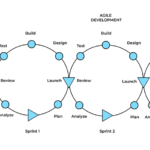
Álvaro M. Chang-Arana, Katja Hölttä-Otto & Jari Jussila
In design, designers need to understand users accurately. Understanding of users has been considered to lead to the development of products and services that better match user needs and goals. Therefore, a relevant question is how accurately designers can infer the users’ thoughts and feelings.
Surprisingly, previous research on an interpersonal accuracy task among friends (Ickes & Hodges, 2013), strangers (Ickes et al., 1990), and psychotherapists-clients (Marangoni et al., 1995) have reported 20–30 percent accuracy of people inferring the thoughts and feelings of others. A recent study (Chang-Arana, Piispanen et al., 2020) uncovered that when designers inferred design-related contents, they were able to reach approximately 50 percent accuracy, which was higher than inferring mental contents irrelevant to the design. This difference suggests that interpersonal accuracy is a skill that could be trained. We present recent research results related to the interpersonal accuracy of designers, suggest design methods to support the interpersonal accuracy of designers and raise ethical considerations regarding user understanding.
User understanding is good business
Successful businesses and projects have been associated with practicing design-thinking or human-centred design (Brown, 2019; Kramer et al., 2016). For instance, based on a McKinsey (2018) study of 300 publicly listed companies, the revenue growth of top design performers was almost double that of their industry counterparts, and shareholder return growth was 70 percent higher than their industry peers (Sheppard et al., 2018). In a study by Adobe and Forrester (2016) greater market share was reported by 41 percent of design-led organizations and competitive advantage by 46 percent of design-led companies compared to competitors that do not have a design approach. As an approach to design, design thinking highlights the role of empathy. However, there is no widely accepted or consistent definition of empathy in design (Chang-Arana, Piispanen et al., 2020). This presents a challenge to the design field: if there is no clarity on what empathy means nor how to measure it, how can the designers and professionals involved in design be successful in their work?
Not just empathy, but more precisely empathic understanding and the accuracy of it
Recent doctoral dissertation of Chang-Arana (2023) tackles this problem by incorporating into design the concept of mutual understanding, and interpersonal accuracy (Hall et al., 2016) as a collection of methods to measure it. Aligned with Surma-aho and Hölttä-Otto’s call for better operationalization of empathy (2022), two interpersonal accuracy methodologies, empathic accuracy (EA; Ickes et al., 1990; Ickes & Hodges, 2013; Ickes, 2016) and emotion recognition accuracy (ERA; Bänziger, 2016) were adapted for design and music performance contexts (Chang-Arana, 2023). Although, the latter context exceeds this article’s focus.
Designers may intend certain uses for and anticipate attitudes toward their creations. Yet, end-users, having their own needs, interests, and circumstances, may not share such design expectations (Hassenzahl, 2018). Through interpersonal accuracy, it is possible to identify and assess how accurately designers infer users’ needs, expressed as thoughts and feelings. We think users’ thoughts and feelings are a door towards better-tuned design interventions, and hence, better design outcomes.
Ways to measure understanding between users and designers
Empathic accuracy
Empathic accuracy (Ickes, 2016) is a set of performance-based methods to measure mind-reading accuracy between an interacting dyad (e.g., designer and user, Chang-Arana, Piispanen et al., 2020). A conversation between a dyad is videoed. A member of the dyad acts as the target of inference. They rewatch the interaction and annotate thoughts and feelings remembered, and the exact recording time when these occurred. The other member of the dyad acts as a decoder. They rewatch the interaction, only that it is stopped at the time points annotated by the target. The decoder must infer as accurately as possible the target’s mental contents at those exact time stops. The accuracy of these inferences is rated by a group of naïve raters. The higher the score, the higher the EA (see Ickes, 2016, for further details on EA methods).
Emotional recognition accuracy
Emotional recognition accuracy (ERA) is the ability to correctly identify someone else’s non-verbal emotional expressions (Bäzinger, 2016; Chang-Arana, 2023). Methods of ERA may be more varied than the standard EA methods. Yet, some methodological commonalities can be established. A typical ERA study will ask participants to infer what is the emotional state of a target based on a predetermined set of alternatives. Perceivers will be presented with different stimuli, such as video recordings, photographs, gestures, or audio-recorded vocal expressions. The accuracy will be determined by the self-reported intention of the target or by the emotional intention chosen by the researchers, and the answers provided by the participants.
We are quite inaccurate
So far, only EA has been adapted to the design context. When applying EA in design, designers obtained approximately 50 percent accuracy when inferring the mental contents of users in different design contexts (Chang-Arana, Surma-aho et al., 2020). Although a 50 percent accuracy may seem low, it is considerably higher than past findings in other research contexts. Previous EA studies have measured the interpersonal accuracy of male strangers (EA = 24 %) vs. male friends (EA = 36 %; Stinson & Ickes, 1992), and psychology students’ EA towards psychotherapy clients (23–24 %; Marangoni et al., 1995).
Yet, a closer look into designers’ EA shows higher accuracy when inferring mental contents relevant to design vs. other mental contents (Chang-Arana, Surma-aho et al., 2020). The difference may be attributed to the design context. Designers approach users intending to understand design-relevant experiences. Their attentional resources, tailored interviews and other methods, and demonstrations of objects or actions, all support designers’ user-understanding. Still, designers’ EA could be higher. Are there ways to achieve such an increase?
How can we get more accurate via various design methods?
Interpersonal differences impact interpersonal accuracy (Li & Hölttä-Otto, 2023). For example, coming from different national cultures lowers the accuracy significantly compared to a user-designer pair that comes from the same national background (Li & Hölttä-Otto 2020; Li et al., 2021). This can be mitigated via travel, but other actions can be taken to improve the accuracy (Li & Hölttä-Otto 2023; Li et al., 2021). Chang-Arana (2023) provides two general recommendations for improving understanding between designer-user dyads. First, for a long time, psychology has focused on investigating perspective-taking or people’s capacity to infer someone else’s mental contents (Batson et al., 1997). More recently, however, psychologists are exploring perspective-getting (Damen, Pollmann et al., 2021; Damen, van Amelsvoort et al., 2021): a higher understanding of someone’s mental events can be achieved by asking directly from them rather than inferring such contents. For example, if a user describes a chair as “uncomfortable”, a perspective-getting approach would encourage the designer to actively inquire what “uncomfortable” means to this designer in this context until both agree on its meaning. Second, utilizing accessories and other resources during an interaction to exemplify. Ambiguity in the communication between designers and users may be reduced through props. Considering these general recommendations, we will next briefly review some tools utilized by designers that are thought to increase the understanding of a user. We will comment on these methods using psychology literature on empathy, where we find a longer research tradition and fuller understanding of empathy than in design (Chang-Arana et al., 2022). Yet, we acknowledge that empathy in psychology is also a problematic concept (Cuff et al., 2016).
Designers may use wearable simulators (Kullman, 2016) such as goggles, restrictive bodysuits, and other types of equipment which may temporarily limit the movements and physical possibilities of a designer (Chang-Arana et al., 2022). These tools may help bridge differences in state influences (e.g., ethnic background, age, shared experiences). By state, we mean an entity’s “relative stability of its basic components or elements. Although the components or elements are essentially qualitatively stable, it is possible for them also to be dynamic, as in a hyperactive state or a state of flux” (APA, 2023, par. 1).
Other methods may require less bodily engagement and more intellectual and imaginative capacities of designers. Such is the case with design tools such as personas (Miaskiewicz & Kozar, 2011), storytelling (Madsen & Nielsen, 2010), and empathy maps (Both & Baggereor, n.d). These tools may engage more of the designers’ top-down control. That is, willingly taking the perspective of users. This capacity is often referred to as cognitive empathy or the cognitive process which allows adopting someone else’s psychological perspective or point of view (Shamay-Tsoory, 2011).
Related to taking the perspective of users, in design there is a clear understanding that, even when sharing similar backgrounds (Taffe, 2015), designers are limited in their capacity to understand users. That is, designers are limited by their empathic horizon (Chang-Arana et al., 2022; McDonagh et al., 2018). Our studies of empathic accuracy in design allowed us to quantify the limited understanding designers have of users (as per our operationalization of empathic accuracy). Relatedly, health sciences are encouraging their professionals to “recognize when they are in the position of power with their patients or students and attempt to be open, self-aware, egoless, and flexible.” (Foronda, 2020, p. 10). Similarly, the concept of the empathic horizon (Heylighen & Dong, 2019; McDonagh et al., 2018) could remind designers of disparities in understanding and power over users.
On a wider level, the system intelligence approach to empathic design emphasizes the importance of the whole, recognizing the interconnectedness, interdependence, and systematic feedback (Saarinen & Hämäläinen, 2004) present in the interaction between designers, users, and their context. Taking a systems intelligence approach to design, a designer acknowledges that improvements in micro-behaviors such as eye contact, expressions of gratefulness for others and reciprocity can create positive systemic growth (Jumisko-Pyykkö et al., 2021, p. 199). Tactics such as approaching people with warmth and acceptance and having a positive look on the future can support more empathic design (Jumisko-Pyykkö et al., 2021).
Designers make use of objects and props to help improve the outcome of interactions (e.g., a contextual interview or a prototype session). This facilitates understanding what, otherwise, could be unclear user needs. We think this practice may be consistent with perspective-getting, or “actively inquiring about other peoples’ mental states” (Damen, Pollmann et al., 2021, p. 2).
Ethical considerations about interpersonal accuracy in design
Before concluding, we consider some ethical considerations on understanding accurately a user (Chang-Arana et al., 2022). Designers have highlighted the pragmatic use of “empathy”. For example, Kouprie and Sleeswijk Visser (2009, pp. 437–438) claimed that empathy in design allows designers to “get closer to the lives and experiences of (putative, potential or future) users, in order to increase the likelihood that the product or service designed meets the user’s needs”. Designers recognize that empathic design without a serious pondering of its professional, social, and ethical implications (Devecchi & Guerrini, 2017; Hess et al., 2017; Hess et al., 2021; Walther et al., 2017) may risk viewing people as “simply the economic bottom line of designers” (Walther et al., 2017, p. 132). Thus, we encourage designers to engage with users while carefully considering their interventions’ ethical consequences.
In short
Empathy is deemed necessary for successful design outcomes. However, its definition is not clear. Interpersonal accuracy is an alternative methodological approach to understanding empathy in design. We are quite inaccurate when inferring what someone else is thinking or feeling, and this is true for designers as well. Yet, we think that psychology offers designers conceptual and methodological tools to increase interpersonal accuracy. Perspective-getting may be a useful concept for designers trying to improve user understanding. Using accessories and other resources during an interaction may reduce ambiguity in the communication between designers and users. Equally important is to practice design while being aware of its ethical implications for the well-being of society and the sustainability of our environment.
Conclusion
An important takeaway for design professionals is that when understanding users of your products and services, quite likely, you are going to get it (mostly) wrong. Acknowledge you are not going to get it right. Move beyond specifications or features of the product and engage in perspective-getting, a more active understanding of a user’s thoughts and feelings. For educators and design students the insights of this article may be helpful in design skills development and expanding the current toolkit of design methods. Lastly, while exploring user-understanding (and across the whole design process), keep in sight the ethical consequence of your design practices.
Authors
Álvaro M. Chang-Arana, D. Sc. (Tech.), is an academic visitor at Aalto University School of Science and teaching assistant at Pontifical Catholic University of Peru. His research focuses on music performance anxiety, empathy, interpersonal accuracy, and psychology of motivation.
Katja Hölttä-Otto, D. Sc. (Tech.), is a Professor of Engineering Design at the University of Melbourne. She previously worked at the Aalto Design Factory, where most of this research was conducted. Her research focuses on design methodology, design for circularity and engineering education.
Jari Jussila, D. Sc. (Tech.), is Director of HAMK Design Factory and Principal Research Scientist at Häme University of Applied Sciences (HAMK). His research focuses on design-based education and university-industry collaboration.
References
Adobe and Forrester. (2016). Design-led firms win the business advantage. A focus on Cx strategy and execution reaps rewards. Retrieved from: https://landing.adobe.com/dam/downloads/whitepapers/305222.en.forrester.design-led-firms-advantage.pdf
American Psychological Association. (2023). Dictionary of psychology. Retrieved on 01.09.2023 from https://dictionary.apa.org/state
Bänziger, T. (2016). Accuracy of judging emotions. In J. A. Hall, M. S. Mast, & T. V. West (Eds.), The social psychology of perceiving others accurately (pp. 23–51). Cambridge University Press. https://psycnet.apa.org/doi/10.1017/CBO9781316181959.002
Batson, C. D., Early, S., & Salvarani, G. (1997). Perspective taking: Imagining how another feels versus imagining how you would feel. Personality and Social Psychology Bulletin, 23(7), 751–758. https://doi.org/10.1177/0146167297237008
Both, T., & Baggereor, D. (n.d.). Bootcamp Bootleg [Online], online document (downloaded on July 15th 2019). Retrieved from https://dschool.stanford.edu/resources/the-bootcamp-bootleg
Brown, T. (2019). Change by Design: How Design Thinking Transforms Organizations and Inspires Innovation. HarperBusiness.
Chang-Arana, Á. M. (2023). Investigating interpersonal accuracy in design and music performance-Contextual influences in mutual understanding. (Aalto University publication series DOCTORAL THESES, 22/2023) [Dissertation, Aalto University]. Aaltodoc. http://urn.fi/URN:ISBN:978-952-64-1157-6
Chang-Arana, Á. M., Piispanen, M., Himberg, T., Surma-aho, A., Alho, J., Sams, M., & Hölttä-Otto, K. (2020). Empathic accuracy in design: Exploring design outcomes through empathic performance and physiology. Design Science, 6, e16. https://doi.org/10.1017/dsj.2020.14
Chang-Arana, Á. M., Surma-aho, A., Hölttä-Otto, K., & Sams, M. (2022). Under the umbrella: Components of empathy in psychology and design. Design Science, 8, e20. https://doi.org/10.1017/dsj.2022.13
Chang-Arana, Á. M., Surma-aho, A., Li, J., Yang, M. C., & Hölttä-Otto, K. (2020). Reading the users’ mind: Designers show high accuracy in inferring design-related thoughts and feelings. ASME 2020 IDETC/CIE Conference, 17th–19th August. https://doi.org/10.1115/DETC2020-22245
Cuff, B. M. P., Brown, S. J., Taylor, L., & Gowat, D. J. (2016). Empathy: A review of the concept. Emotion Review 8(2), 144–153; https://doi.org/10.1177/1754073914558466
Damen, D., Pollmann, M. M. H., & Grassow, T-L. (2021). The benefits and obstacles to perspective getting. Front. Commun. 6:611187. https://doi.org/10.3389/fcomm.2021.611187
Damen, D., van Amelsvoort, M., van der Wijst, P., Pollmann, M., & Krahmer, E. (2021). Lifting the curse of knowing: How feedback improves perspective-taking. Quarterly Journal of Experimental Psychology, 74(6), 1054–1069. https://doi.org/10.1177/1747021820987080
Devecchi, A., & Guerrini, L. (2017). Empathy and design. a new perspective. The Design Journal 20(1), S4357–S4364; https://doi.org/10.1080/14606925.2017.1352932
Foronda, C. (2020). A theory of cultural humility. Journal of Transcultural Nursing, 31(1), 7-12. doi:https://doi.org/10.1177/1043659619875184
Hall, J. A., Mast, M. S., & West, T. V. (2016). Accurate interpersonal perception: Many traditions, one topic. In J. A. Hall, M. S. Mast, & T. V. West (eds.), The social psychology of perceiving others accurately (pp. 3–22). Cambridge University Press. https://doi.org/10.1017/CBO9781316181959.00
Hassenzahl, M. (2018). The thing and I: Understanding the relationship between user and product. In M. Blythe & A. Monk (eds). Funology 2. Human–Computer Interaction Series (pp. 301-313). Springer, Cham. https://doi.org/10.1007/978-3-319-68213-6_19
Hess, J. L., Miller, S., Higbee, S., Fore, G. A., & Wallace, J. (2021). Empathy and ethical becoming in biomedical engineering education: a mixed methods study of an animal tissue harvesting laboratory. Australasian Journal of Engineering Education, 26(1), 127–137. https://doi.org/10.1080/22054952.2020.1796045
Hess, J. L., Strobel, J., & Brightman, A. O. (2017). The development of empathic perspective-taking in an engineering ethics course. Journal of Engineering Education, 106(4), 534–563. https://doi.org/10.1002/jee.20175
Heylighen, A., & Dong, A. (2019). To empathise or not to empathise? Empathy and its limits in design. Design Studies, 65, 107–124. https://doi.org/10.1016/j.destud.2019.10.007
Ickes, W., & Hodges, S. D. (2013). Empathic accuracy in close relationships. In J. A. Simpson & L. Campbell (eds.), Oxford Library of Psychology. The Oxford handbook of close relationships (pp. 348–373). Oxford University Press.
Ickes, W. (2016). Empathic accuracy: Judging thoughts and feelings. In J. A. Hall, M. S. Mast, & T. V. West (eds.), The social psychology of perceiving others accurately (pp. 52–70). Cambridge University Press. https://doi.org/10.1017/CBO9781316181959.003
Ickes, W., Bissonnette, V., Garcia, S., & Stinson, L. L. (1990). Implementing and using the dyadic interaction paradigm. In C. Hendrick & M. S. Clark (eds.), Research methods in personality and social psychology (pp. 16-44). Sage Publications, Inc.
Jumisko-Pyykkö, S., Viita-aho, T., Tiilikainen, E., & Saarinen, E. (2021). Towards systems intelligent approach in empathic design. Proceedings of the 24th International Academic Mindtrek Conference. https://doi.org/10.1145/3464327.3464370
Kouprie, M., & Sleeswijk Visser, F. (2009). A framework for empathy in design: Stepping into and out of the user’s life, Journal of Engineering Design, 20(5), 437–448. https://doi.org/10.1080/09544820902875033
Kramer, J., Agogino, A. M., & Roschuni, C. (2016). Characterizing competencies for human-centered design. In International Design Engineering Technical Conferences and Computers and Information in Engineering Conference (Vol. 50190, p. V007T06A026).
Kullman, K. (2016). Prototyping bodies: A post-phenomenology of wearable simulations. Design Studies 47, 73–90. https://doi.org/10.1016/j.destud.2016.08.004
Li, J., & Hölttä-Otto, K. (2020). The influence of designers’ cultural differences on the empathic accuracy of user understanding. The design journal, 23(5), 779–796. https://doi.org/10.1080/14606925.2020.1810414
Li, J., & Hölttä-Otto, K. (2023). Inconstant empathy – Interpersonal factors that influence the incompleteness of user understanding. Journal of Mechanical Design, 145(2), 021403. https://doi.org/10.1115/1.4056232
Li, J., Surma-aho, A., Chang-Arana, Á. M., & Hölttä-Otto, K. (2021). Understanding customers across national cultures: the influence of national cultural differences on designers’ empathic accuracy. Journal of Engineering Design, 32(10), 538–558. https://doi.org/10.1080/09544828.2021.1928022
Madsen, S., & Nielsen, L. (2010). Exploring persona-scenarios – Using storytelling to create design ideas. In D. Kater, R. Orngreen, P. Yammiyavar & T. Clemmensen (eds.). Human Work Interaction Design: Usability in Social, Cultural and Organizational Contexts – Second IFIP WG 13.6 Conference, HWID 2009 Pune, India, October 7–8, 2009 (pp. 57-66). https://doi.org/10.1007/978-3-642-11762-6_5
Marangoni, C., Garcia, S., Ickes, W., & Teng, G. (1995). Empathic accuracy in a clinically relevant setting. Journal of Personality and Social Psychology, 68(5), 854–869. https://doi.org/10.1037/0022-3514.68.5.854
McDonagh, D., Woodcock, A., & Iqbal, S. (2018). Experience + Experience + Experience = Empathy design for health. Sheffield Hallam University.
McKinsey. (2018). The business of value of design. Retrieved from: https://www.mckinsey.com/~/media/mckinsey/business%20functions/mckinsey%20design/our%20insights/the%20business%20value%20of%20design/mckinsey-bvod-art-digital-rgb.pdf
Miaskiewicz, T., & Kozar, K. A. (2011). Personas and user-centered design: how can personas benefit product design processes? Design Studies 32, 417–430. https://doi.org/10.1016/j.destud.2011.03.003
Saarinen, E., & Hämäläinen, R. P. (2007). Systems intelligence: Connecting engineering thinking with human sensitivity. Systems intelligence in leadership and everyday life, 51–78.
Shamay-Tsoory, S. G. (2011). The neural bases for empathy. The Neuroscientist, 17(1):18–24. https://doi.org/10.1177/1073858410379268
Sheppard, B., Yeon, H., & London, S. (2018). Tapping into the business value of design. The McKinsey Quarterly.
Stinson, L., & Ickes, W. (1992). Empathic accuracy in the interactions of male friends versus male strangers. Journal of personality and social psychology, 62(5), 787. https://psycnet.apa.org/doi/10.1037/0022-3514.62.5.787
Surma-aho, A., & Hölttä-Otto, K. (2022). Conceptualization and operationalization of empathy in design research. Design Studies, 78. https://doi.org/10.1016/j.destud.2021.101075
Taffe, S. (2015). The hybrid designer/end-user: revealing paradoxes in co-design. Design Studies, 40, 39–59. https://doi.org/10.1016/j.destud.2015.06.003
Walther, J., Miller, S. E. & Sochacka, N. W. (2017). A model of empathy in engineering as a core skill, practice orientation, and professional way of being. Journal of Engineering Education, 106(1), 123–148. https://doi.org/10.1002/jee.20159





